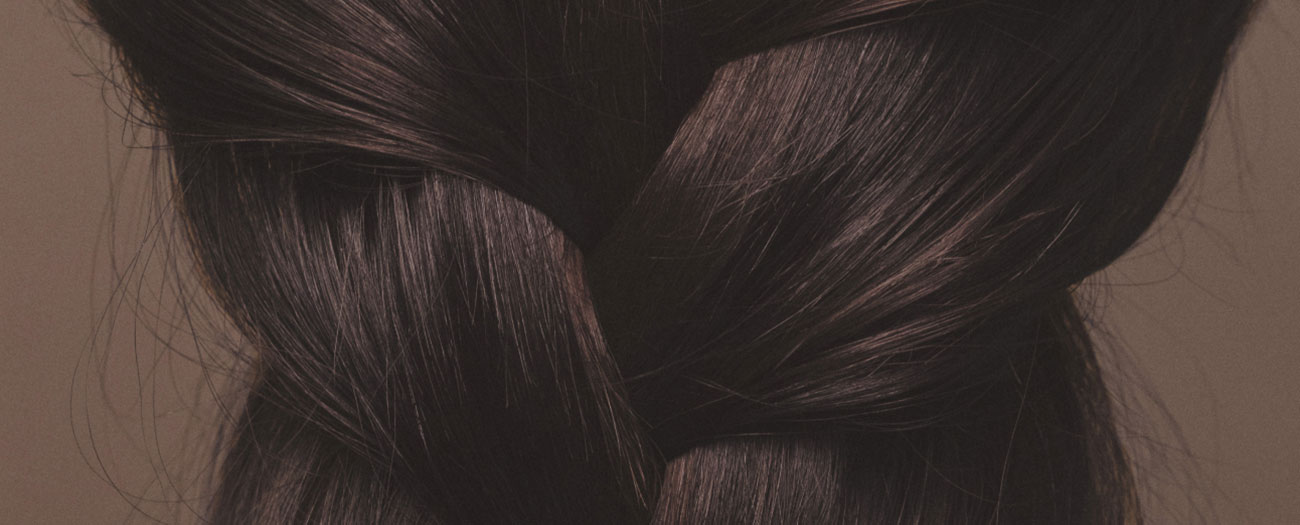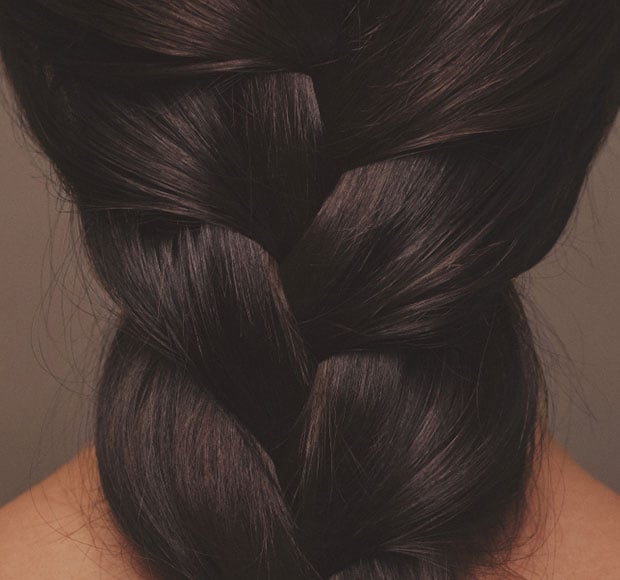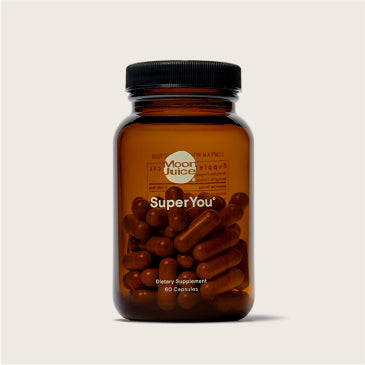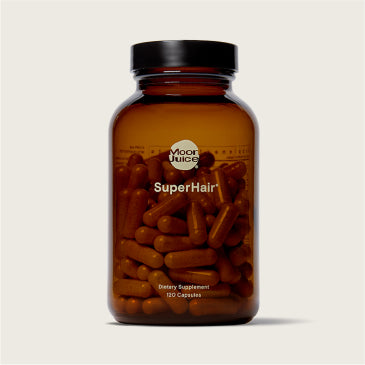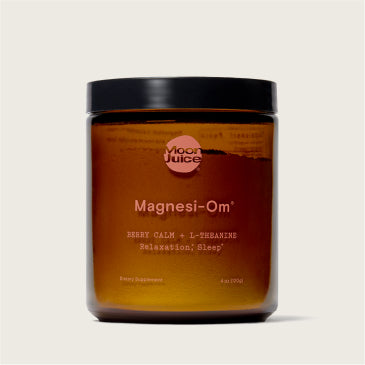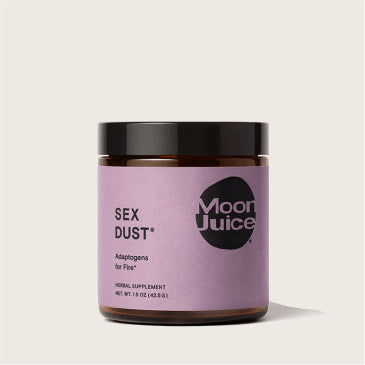Wondering how to make your hair grow faster? Anyone who’s experienced postpartum shedding or has tried to grow out an unfortunate haircut knows that recovering thickness or length can be an uncomfortably slow process. That’s because the key to hair growth is hair health, which can take time to cultivate. If you want to speed up the process, there are science-backed tools you can use to build hair health in a matter of weeks. Below are plenty of hair growth tips.
Hair Health 101
Hair health, skin health, and internal health are all intimately connected. Hair is one of the first ways the body signals something’s off internally. So how can you tell if your hair is healthy? What are the indicators that you might need to give it more nourishment?
The first is excessive shedding. On average, we shed 50-100 strands of hair daily. If you’re losing significantly more (aka you have to call your plumber very regularly to snake your shower drain) it’s considered excessive.
Another indicator is slow growth, which can be a result of nutritional deficiencies. Inadequate levels of minerals like Zinc or B and D Vitamins can disrupt healthy hair cycles, delaying growth and leading to weaker strands that are more prone to damage.
Brittle hair or dullness can also signal that your hair is in need of some care. Because balanced sebum production is critical for shiny, healthy hair, dull hair might be an indicator that sebum is out of whack. These natural moisturizing oils created by your body act as a protective layer on your scalp, to guard against infection and maintain a healthy environment for growth.
Types of Hair Loss
Hair loss is complex and unique to every person, but there are a couple common types.
Telogen effluvium is a form of temporary hair loss that may sound familiar if you’ve gone through postpartum, menopause, or had extreme hair loss after a surgery or medical event. It’s often a result of stress on the body due to taxing life events, illness, or even over-exercising. Many women—about 40-50% according to the American Pregnancy Association—experience excessive shedding after childbirth due to telogen effluvium, but it can also result from any major stressors or traumatic events (1, 2).
Think of it like this. There are three main phases to your hair cycle: the growth phase (anagen), the rest phase (catagen), and the fall-out phase (telogen). All the hairs on your head are in different phases of these cycles, but after an extremely stressful event, the biological shock can cause more of your hair to enter the telogen cycle.
Another common type of hair loss is androgenic alopecia. It manifests as hair thinning along the hairline, crown, or part, and accounts for the dreaded pattern baldness. This can be influenced by genetics and triggered by DHT (Dihydrotestosterone). Also known as the hair-destructive hormone, DHT is an androgen sex hormone derived from testosterone. Though androgenic alopecia is permanent, there are natural measures you can take to combat DHT, which we’ll get into.
Whether you’re in a hair crisis or want your healthy hair to grow faster, here are some tips to stimulate hair growth for thicker, longer locks.
1. Handle Hair With Care
To avoid pulling out your hair, you should stop pulling at your hair. Aggressive rubbing can damage your strands or lift them away completely. Take a break from tightly-wound styles like slicked back high ponytails. You can also swap your plastic hair ties with gentler silk or organic cotton.
To prevent breakage, be sure to use a nourishing conditioner on the ends of your hair. A hair oil after showering can also help lock moisture into weak, brittle hair.
Just note that your hair strands are far weaker when they’re wet. That’s because the proteins that make up each strand form weaker hydrogen bonds. Instead of brushing your hair after washing, brush before you step in the shower. Use a comb after showering for gentler detangling. Instead of drying your hair with a traditional towel, use a microfiber one.
Coloring your hair can also be hard on your strands, so see someone you trust to dye and highlight. Getting a bad color job fixed only adds more damage to your hair growth!
2. Turn Down the Heat
As you probably know, heat tools like blow dryers, curling irons, and straighteners can all cause unwanted damage. When you must apply heat, always be sure to use a heat protectant first. Use heat tools on a lower setting and keep your blow dryer a healthy distance away from your hair. Only straighten or curl once it’s completely dry.
3. Feed Your Hair the Right Nutrients
Your body relies on protein, healthy fats, and micronutrients in order for your hair to grow thick and long. Key minerals and vitamins that improve hair health include the following:
- Zinc
- Iron
- Vitamin A
- Biotin and other B vitamins
- Vitamin C
- Vitamin D
- Vitamin E
In order to meet these dietary needs, it’s recommended that you eat a diverse diet with plenty of whole fruits and vegetables—aim to eat colorfully and consume 30 or more different plants a week.
Don’t forget the protein. Your hair is mostly composed of keratin, a fibrous protein that gives it strength and structure. When hair is deficient in keratin, it’s more prone to breakage, and can look dry and frizzy. Incorporating high-quality protein in your diet helps keep hair strong and long. You can also support keratin production and stimulate increased follicle growth by consuming foods (like sweet potatoes and seeds) that contain Biotin, a B Vitamin known for its hair-helping benefits.
Consuming healthy fats is another way to support your hair health. Healthy sebum levels are essential for your scalp’s biome, helping to maintain the proper pH and protect against UV damage, bacteria, and fungus. Omega-3s and other healthy fats help support balanced sebum levels on your scalp. Excess buildup of sebum causes scalp congestion that can prevent growth, while lack of sebum leaves hair brittle and vulnerable. Nutritional deficiencies can lead to this underproduction of sebum, so it’s important to have a well-balanced diet if you’re trying to grow out your hair.
To support your hair’s growth and internal structure, you should give it the building blocks it needs by eating a range of whole foods like almonds, avocados, coconut, blueberries, sunflower seeds, pumpkin seeds, and high quality sources of protein.
Increasing your Collagen intake can also help improve hair health. By adding collagen supplements or plant-based collagen powder to your supplement routine, you can help improve the health of your hair.
4. Add a Daily Vitamin
That being said, the nutrients we receive from food often aren’t enough to grow healthy hair because our hair is the last place key nutrients will go—essential processes like metabolism, bone growth, and cellular repair always take priority. Plus, diet alone isn’t always responsible for nutrient deficiencies—over time, keratin and melanin levels decrease, causing hair to become frizzier, drier, and more prone to breakage.
Many women who breastfeed are also depleted of vitamins and minerals. During this period, the body diverts nutrients away from the parent and toward the baby, meaning that the mother isn’t getting nutrients like B, D, Zinc, and Iron in adequate levels for healthy hair growth. This, of course, can contribute to the postpartum shed that so many women experience.
Replenishing nutrients with a multivitamin can help prevent further damage. If you’re wanting to address nutritional deficiencies, it’s a good idea to add a hair vitamin into your routine.
SuperHair®, a comprehensive bioavailable and vegan hair multivitamin, helps address deficiencies in your diet. With 10 vitamins like Biotin, Vitamin E, Vitamin C, and B Vitamins, plus adaptogens and botanicals like Horsetail and Kelp, it helps create an environment for healthier, thicker, stronger hair growth.
5. Fight Free Radicals
Over time, oxidative stress takes a toll on our hair by way of free radicals. Our bodies contain antioxidants like Glutathione, Melatonin, Vitamin C, and Vitamin E to help neutralize free radicals, but these stores decline with stress and time.
Melatonin, produced by our bodies at the highest rate when we sleep, is one of our most powerful antioxidants. Melatonin receptors in hair follicles suggest that this hormone has a role in the cycle of hair growth. Prioritizing sleep by practicing good sleep hygiene will help benefit your body’s ability to produce melatonin, helping fight free radical damage. Research has also shown that topical melatonin can produce positive effects for hair growth in those with androgenic alopecia (3).
Extrinsic, environmental stressors like UV and toxins can also cause accelerated signs of age in hair over time. Intrinsic factors like stress and autoimmunity can age hair rapidly as well.
Supplementing with antioxidants can help replenish your reserves and support the regulation of your nervous system. Nutrients and adaptogens like Vitamins C and E, Ashwagandha, Magnesium, and Rhodiola are tools to keep us calm and in optimal health.
6. Balance Your Hormones
Sebum decreases with time, and it’s also impacted by our hormones. When hormones are out of balance, it can cause increased shedding and send sebum production into overdrive. Too much sebum on your scalp can cause hair follicles to become congested, inhibiting growth and causing itchiness that may tempt you to scratch your head—aka unwanted friction and breakage.
Many hormones can influence hair loss or growth. Shifts in hormones, like when estrogen drops during the postpartum period, can contribute to excess shedding. Decreased estrogen, progesterone, and thyroid hormones can also cause hair to shed at a faster rate while slowing down the growth process.
Aside from taking lifestyle measures to help balance your hormones and speaking to a health care practitioner if you’re concerned, taking adaptogens like Ashwagandha can also help restore hormonal balance. Other botanicals can help address hair hormones, like Saw Palmetto, which can help inhibit the hair-destructive hormone, DHT. For this reason, we included both Ashwagandha and Saw Palmetto in SuperHair.
7. Unstress, Don’t Fret
Adaptogens help combat stress—one of the main causes of hair loss. Remember, telogen effluvium is a form of hair loss that can happen due to several factors, all of which involve your body’s stress response.
Stress can manifest in our hair months after a stressful event like a virus, birth, surgery, or divorce. It’s easy to get alarmed if you notice a significant amount of shedding, but try not to stress—it can perpetuate the cycle. If you’re going through a stressful time, take active measures both to calm your body and to mitigate future loss with a daily supplement.
Sign Up, Nerd Out
Get wellness tips, education, and recipes
delivered straight to your inbox.
Get wellness tips, education,
and recipes delivered
straight to your inbox.
8. Keep Up the Hair Trims
Yes, the old counterintuitive advice is true. While snipping ends has nothing to do with how fast your hair grows from its follicles, getting a healthy trim every few months can help prevent damage from split ends. When you have split ends, they can further split up through your hair shaft, causing fraying and breakage up top. By cleaning up tapered ends, regular trims can make thinning hair look thicker and fuller while you’re growing it out.
9. Start with the Scalp
Taking care of the skin on your head also provides a hospitable environment for your hair to grow. Your scalp needs oxygen, just like the rest of your skin. Bacteria and fungi thrive in warm, moist environments like a sweaty head, so if you’re wearing a wig or a hat, be sure to let your skin breathe every now and then.
Another way to give your scalp a break? Try to cut down the frequency of shampoos to only 2 or 3 times a week. The scalp’s natural oils can help to repair and hydrate your hair, so you don’t want to strip them too often, or too harshly. Using a dry shampoo in between washes will help you extend the length of your blowout to avoid having to cleanse and dry your hair too often.
When it is time to wash, the temperature at which you shower can also have an impact. Hot showers can be dehydrating to your skin and scalp, so turn the water cooler at least when your head is under the stream.
For some extra love, use a scalp or hair mask once every 1-2 weeks to condition strands or help balance scalp pH. A twice weekly spray or soak made of apple cider vinegar and water can also help to balance scalp health, preventing dandruff and buildup that stifles growth.
Hair loss from pattern baldness has been linked to starved blood flow to the follicles, so be sure to increase circulation to your scalp. A gentle scalp massager can draw blood to your scalp. The menthol in peppermint oil and other tingly ingredients can also help open blood vessels to stimulate blood flow up top.
Rosemary oil has been found to be as effective as minoxidil - commonly known as Rogaine - after six months of use in treating hair loss, according to a 2015 trial on people with androgenetic alopecia (4). Another review found that essential oils such as lavender, chamomile, thyme, and garlic extract could act as natural remedies to help treat hair loss (5).
Look for shampoos or hair treatments with ingredients like rosemary and peppermint, or add these essential oils in safe dilution ratios to your apple cider vinegar soak or homemade hair oil treatment. Consider using certain carrier oils, like coconut oil, sunflower oil, castor oil and cosmetic grade mineral oil, that could help moisturize your hair at the same time. If you’ve just exercised or have an inflamed scalp, skip these home remedies and carry on.
10. Sleep on Silk
Being gentle to your hair includes while you’re sleeping. Slippery fabrics like silk and satin are easier on your hair than traditional pillowcases because they don’t pull on your hair or cause as much tangling (which can result in breakage). Switch to sleeping on a silk pillowcase in order to reduce friction and support your hair growth goals overnight.
Whether you’re experiencing slow hair growth, dullness, or excessive shedding—your hair’s pointing you to an imbalance within. When in doubt, take care of your stress levels, scalp health, and use a daily supplement to fill in your nutritional gaps to get your hair to grow fast. Strong, long, shiny hair takes time to manifest, so be patient and consistent with your habits!
Sources:
Pregnancy and Hair Loss
Hair loss after pregnancy: What’s normal and how to deal with it
Topical Melatonin for Treatment of Androgenetic Alopecia
Rosemary oil vs Minoxidil 2% for the treatment of Androgenetic Alopecia: A randomized comparative trial
The Use of Natural Ingredients in the Treatment of Alopecias with an Emphasis on Central Centrifugal Cicatricial Alopecia: A Systematic Review
Potential use of essential oils in cosmetic and dermatological hair products: A review

